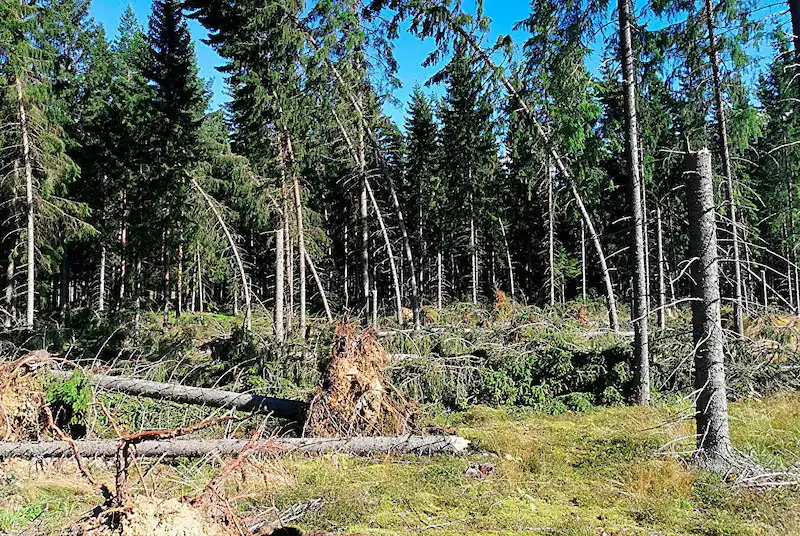In Finland, the European spruce bark beetle prefers mature Norway spruce forests close to recent clear-cut sites, a new study from the University of Eastern Finland finds.
Conducted in an effort to support proper forest management in Finland, the study examined the attributes of Norway spruce forests damaged by the beetle, as well as the role of some landscape attributes in the damage. The scientists analysed data from Metsäkeskus with 4,691 damage cases from 2012 to 2020, and found that the beetle preferred mature forests, forests in herb-rich heath forest site types, and forests in semi-coarse or coarse heath forest soils.
In addition, the scientists found that Norway spruce forests which have a high age and high mean diameter at breast height, and which are located close to recent clear-cut sites—no matter the species— are particularly susceptible.
“If your Norway spruce forest fits the description and is located in Southern Finland, it is wise to check it for spruce bark beetle damage more often than before,” says Doctoral Researcher Alexander Pulgarin Diaz of the University of Eastern Finland.
The European spruce bark beetle (Ips typographus) is the most destructive insect on Norway spruce (Picea abies). Recent years have seen increasing European spruce bark beetle damage in Central Europe and in the Nordic countries, probably due to climate change and especially higher temperatures and longer droughts.
Favourable conditions are now frequent in Northern Europe as well, and concerns about increasing beetle damage and its effects on forest-related income show the need to adapt forest management practices and improve forest resilience.
The study was supported by the Research Council of Finland (former Academy of Finland; UNITE flagship), the FORES and LUMET Doctoral Programmes at the University of Eastern Finland, the Finnish forest owners who supplied information to Metsäkeskus, Luke, the Regional Council of Keski-Suomi, and the Bioinformatics Center, University of Eastern Finland.
Read the paper: Silva Fennica
Article source: University of Eastern Finland
Image: In the photo: Norway spruce damaged by wind. Credit: Alexander Pulgarin Diaz.






